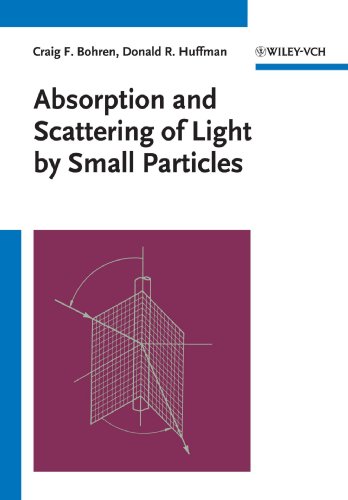Absorption and scattering of light by small particles book download
Par hedges daphne le vendredi, février 19 2016, 01:10 - Lien permanent
Absorption and scattering of light by small particles by Craig F. Bohren, Donald R. Huffman


Absorption and scattering of light by small particles Craig F. Bohren, Donald R. Huffman ebook
Publisher: John Wiley & Sons
Page: 533
Format: djvu
ISBN: 047105772X, 9780471057727
Our eyes are also less sensitive to violet. The Milky Way fills the background of the image with countless yellowish [2] Rayleigh scattering, named after the British physicist Lord Rayleigh, happens when light is scattered off particles of material that are much smaller than the wavelength of the light. Huffman, Absorption and scattering of light by small particles, John Wiley, New York 1983. Download Absorption and Scattering of Light by Small Particles (Wiley Science Paperback Series) pdf free. To look through the clouds at what lies behind, astronomers would need to observe the nebula using longer wavelengths that would not be absorbed. He discovered that when light passes through a clear fluid holding small particles in suspension, the shorter blue wavelengths are scattered more strongly than the red. It can occur when light travels in transparent solids and liquids, but is most C.F. Bohren's treatise on Absorption and Scattering of Light by Small Particles (coauthored with Huffman) is most definitely the resource for looking at detailed physics and mathematics associated with scattering. Rayleigh scattering (named after the English physicist Lord Rayleigh) is the elastic scattering of light or other electromagnetic radiation by particles much smaller than the wavelength of the light. This can be demonstrated by shining a beam of white light through a tank of The spectrum of light emission from the sun is not constant at all wavelengths, and additionally is absorbed by the high atmosphere, so there is less violet in the light. Absorption and Scattering of Light by Small Particles (Wiley Science Paperback Series) Craig F. Fraser: Right, but you're saying like absorption and re-emission, so are these photons that are bouncing into particles in the atmosphere…then they're getting absorbed and then they're getting re-emitted?